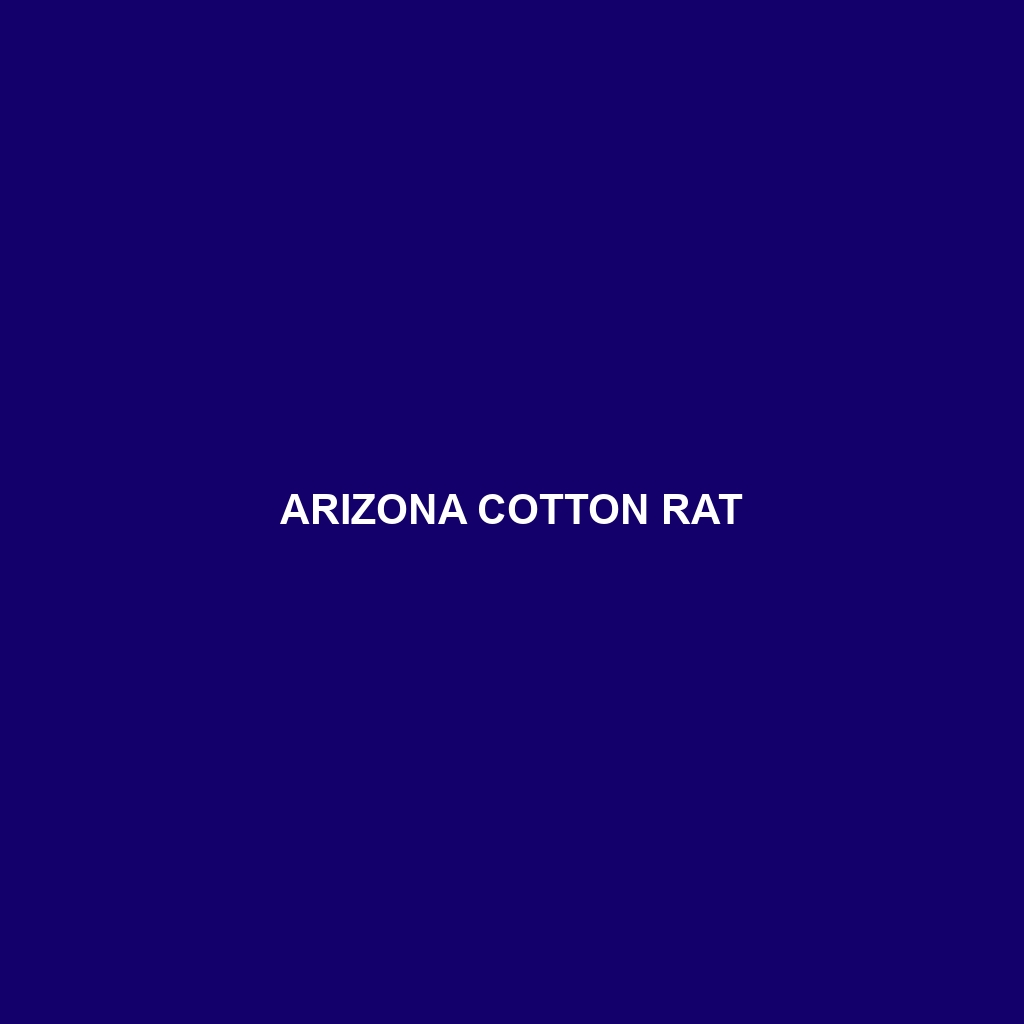Arizona Cotton Rat (Sigmodon arizonae)
Common Name: Arizona Cotton Rat
Scientific Name: Sigmodon arizonae
Habitat: The Arizona Cotton Rat is primarily found in the southwestern United States, particularly in Arizona and parts of New Mexico. These rodents thrive in diverse habitats, including grasslands, deserts, and riparian zones near rivers and streams. They prefer areas with dense vegetation that provide shelter and resources for foraging, making them well-adapted to the unique environmental conditions of the arid Southwest.
Physical Characteristics: Arizona Cotton Rats are medium-sized rodents, typically measuring 10 to 13 inches in length, including their tail. They exhibit a rich brown or grayish fur that blends well with their natural surroundings, often featuring a lighter underbelly. One distinguishing characteristic is their long, scaly tails, which can aid in balance and agility. Their rounded ears and large eyes enhance their sensory perception in their habitat.
Behavior: Arizona Cotton Rats are primarily nocturnal, becoming active during the night when they forage for food. They are known for their burrowing behavior, creating intricate tunnels that serve as nests and storage for food. Socially, they can be solitary or found in small groups, depending on the habitat’s density and resource availability. Their ability to adapt to various environments has drawn the interest of ecologists and wildlife enthusiasts alike.
Diet: The diet of the Arizona Cotton Rat consists mainly of grasses, seeds, and succulent plants native to their habitat. They are opportunistic feeders, also consuming fruits and even insects when available. Their foraging habits contribute to seed dispersal in their ecosystem, making them an essential part of the ecological balance.
Reproduction: Arizona Cotton Rats breed from late spring to early autumn, with females capable of producing several litters each season. A typical litter can consist of 3 to 8 offspring. The young are born hairless and blind, becoming independent within a few weeks. This rapid reproduction rate ensures the population’s resilience against potential threats in the wild.
Conservation Status: Currently, the Arizona Cotton Rat is classified as “Least Concern” by the IUCN, although certain local populations may face habitat destruction due to urbanization and agricultural practices. Ongoing monitoring is essential to maintain their populations and habitat integrity.
Interesting Facts: The Arizona Cotton Rat has a significant historical presence in the region, often studied for its adaptation to arid environments. These rodents can jump surprisingly high for their size, allowing them to evade predators effectively. Additionally, their unique vocalizations are used for communication, adding to their social behaviors.
Role in Ecosystem: Arizona Cotton Rats play a vital role in their ecosystem as herbivores, contributing to vegetation dynamics and seed dispersal. They are also a crucial food source for various predators, including birds of prey and snakes, thus forming an integral part of the food web in their natural habitat.
